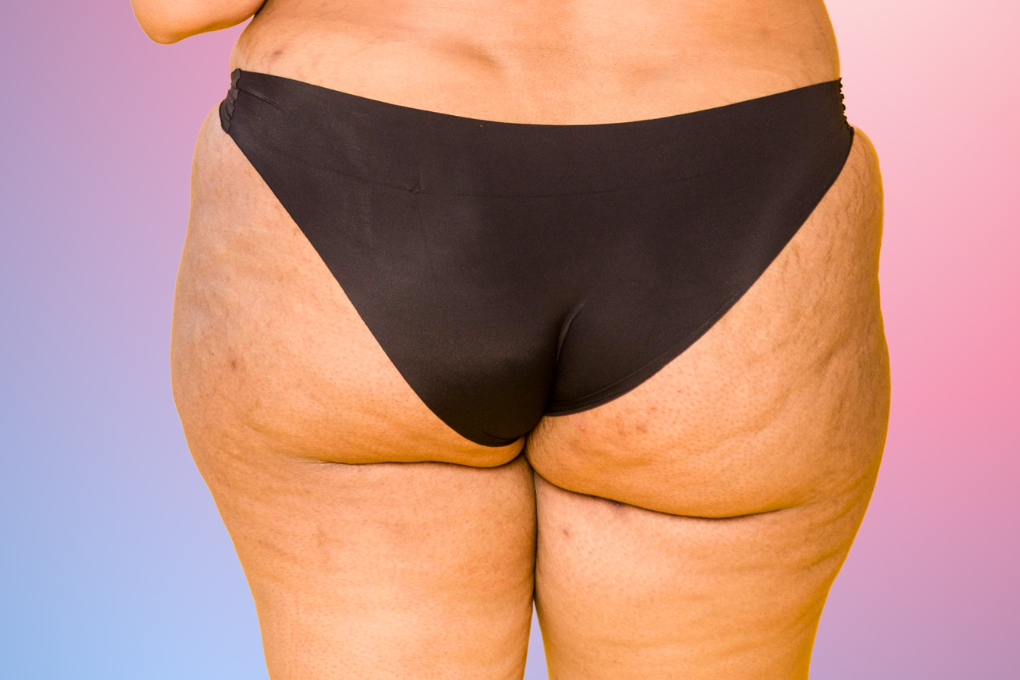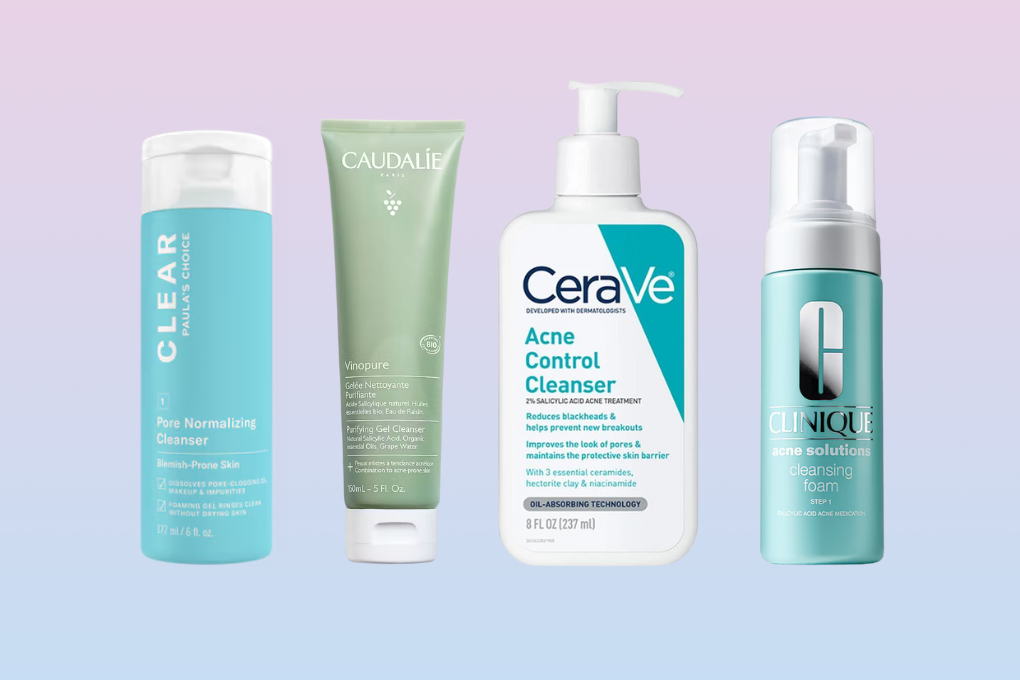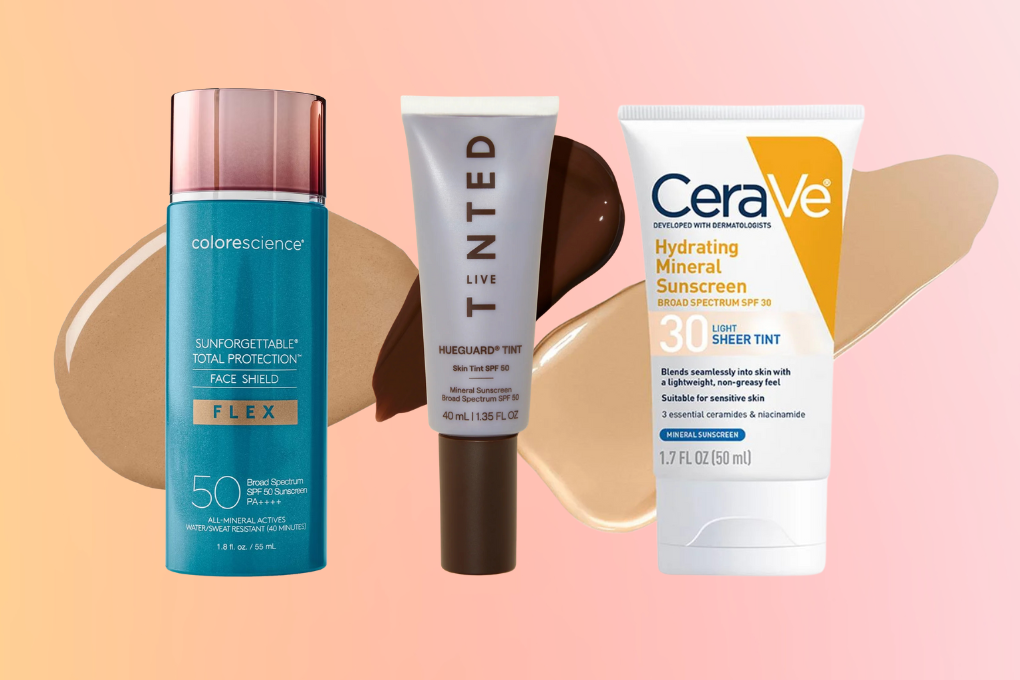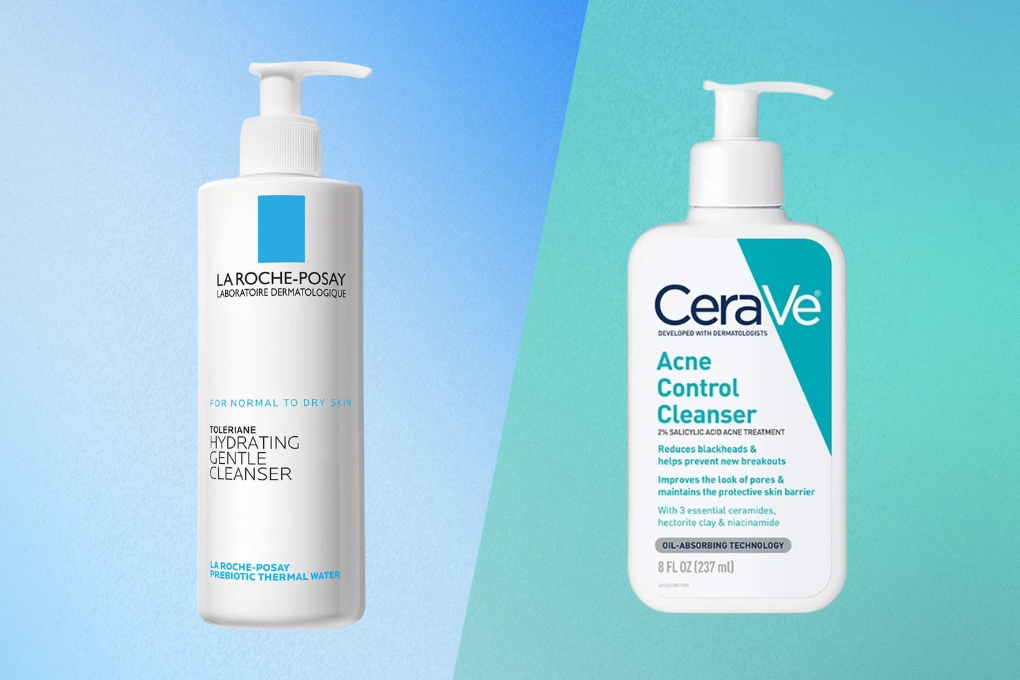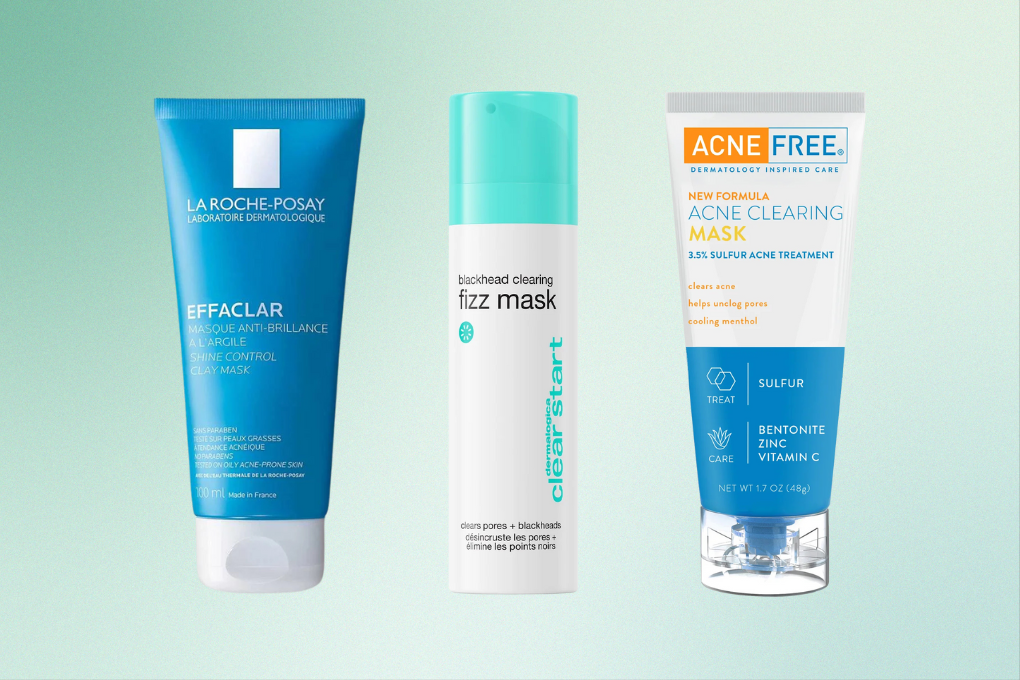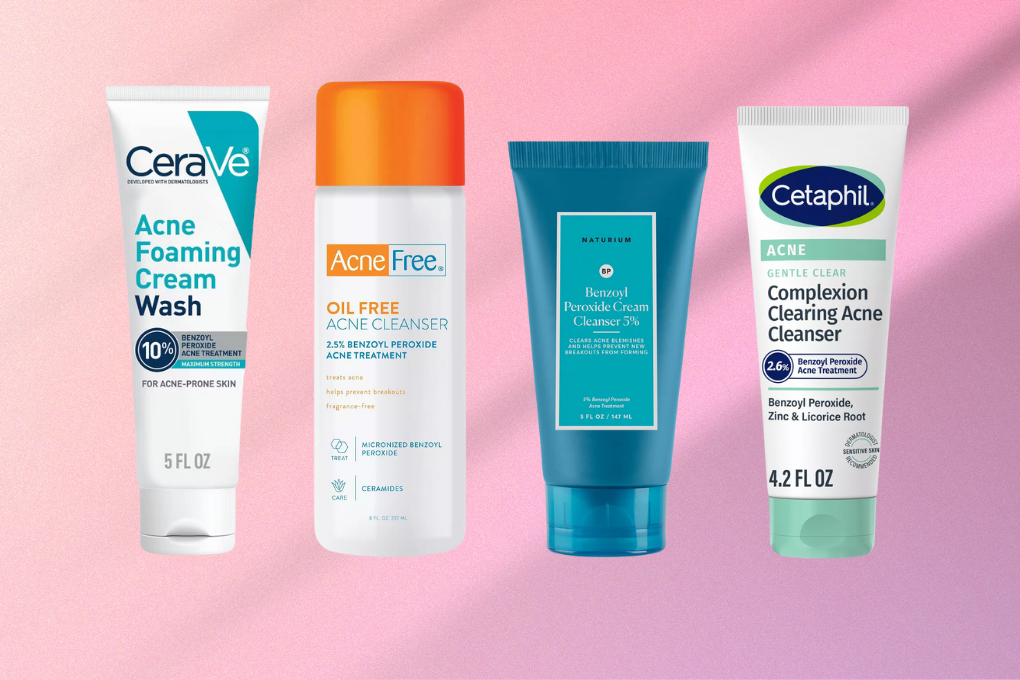Butt acne, sometimes referred to as “buttne,” can be a pain in the ass—literally.
While there’s a natural solidarity between people with facial acne, dealing with pimples on your butt is often kept private and can feel lonely. However, breakouts on buttcheeks are more common than you’d think, and luckily there are effective ways to treat and prevent it.
What Causes Butt Acne?
Butt acne is a common skin condition characterized by pimples, red bumps, or painful cysts on the buttocks. Unlike facial acne, which is usually caused by clogged pores, butt acne is typically not actually acne, but instead can result from several different conditions that mimic the look of acne, including:
Folliculitis
Folliculitis is a skin condition caused by the irritation of your hair follicles. It can occur anywhere on the body where you have hair, but it’s particularly common in areas subjected to friction, heat, and sweat, such as the buttocks, thighs, and underarms. In some cases, the inflammation can develop into larger, painful cysts on the butt.
Folliculitis is usually caused by staph bacteria which can invade the hair follicles if the skin is broken or irritated. Yeasts or fungi can also sometimes cause folliculitis, especially in warm, moist environments.
Keratosis Pilaris
Keratosis pilaris, also known as KP, is more familiar as the small red bumps many people have on the backs of their arms, but it is also possible to get it on your butt.
KP occurs when keratin, a protein that helps protect the skin, builds up and clogs the hair follicles, leading to small, rough bumps. These bumps are usually painless and can be flesh-colored, red, or slightly inflamed. KP is often more common when you have dry skin, and it can flare in winter.
Hidradenitis Suppurativa
Hidradenitis suppurativa, commonly known as HS, is a rarer condition. HS is a chronic inflammatory disorder that affects areas with sweat glands, including the butt, where it causes painful, deep-seated lumps or nodules. These lumps can become inflamed, form abscesses, and even rupture, leading to scarring and tunnels under the skin.
HS is linked to an overactive immune response, and it tends to flare up repeatedly, making it a frustrating and sometimes debilitating condition. If you suspect that your butt acne might actually be HS, consult a dermatologist for an accurate diagnosis and appropriate treatment plan.
Why Do I Have Butt Acne?
Understanding the root cause of your butt acne can help you take the necessary steps to prevent future breakouts.
The cause of butt acne can be hard to pin down as it can result from several factors, such as:
Friction
One of the primary causes of butt acne is friction, particularly from tight clothing. When you wear tight pants or underwear made from non-breathable fabrics such as polyester or spandex, they create constant rubbing against the skin. This friction irritates the hair follicles, leading to inflammation and the development of folliculitis, which often appears as red, bumpy spots. Looser, breathable clothing can help reduce this friction and keep your skin happy.
Sweating
Sweat is another common culprit behind butt acne. Sweating can lead to folliculitis on the butt by creating a warm, moist environment that allows bacteria, fungi, or yeast to thrive. When you sweat heavily, the moisture can get trapped in your hair follicles, especially if tight clothing is worn, causing irritation and inflammation. The friction from clothing rubbing, combined with sweat, can exacerbate the situation by further irritating your skin and making it more susceptible to infections.
Prolonged Sitting
Sitting for long periods, especially in tight clothing or on non-breathable surfaces, can trap sweat and bacteria against the skin, increasing the risk of folliculitis. If you’re spending long hours sitting, whether at a desk, in a car, or lounging on the couch, you might be putting yourself at risk for butt acne. Set a timer to take regular breaks to stand up and move around to help reduce the risk of breakouts caused by sitting too long.
Conditioner
Surprisingly, your hair conditioner might also be contributing to butt or body acne. When you rinse out conditioner in the shower, it can run down your back and settle on your skin, leaving behind a residue that can clog pores and cause irritation. To prevent this, try rinsing off your conditioner before cleaning your body with soap or body wash.
Bacteria
Finally, bacteria play a significant role in the development of butt acne. The skin on your butt, like other parts of your body, can harbor bacteria that thrive in warm, moist environments. When these bacteria invade your hair follicles, they can cause infections that lead to folliculitis and acne. Keeping the area clean and dry, and using antibacterial washes or sprays, can help keep bacteria at bay and prevent breakouts.
How to Get Rid of Butt Acne?
Prevention is just as important as treatment when dealing with acne on your butt. When in doubt, remember to keep the area clean and dry.
Here are some lifestyle tips to keep your butt clear:
Sweat Management
We can’t prevent ourselves from ever sweating, but whenever you can, try to stay in a cool environment and wear moisture-wicking clothes that help keep your skin dry. Make it a habit to shower as soon as possible after exercising or sweating heavily and use a gentle body wash to remove bacteria and sweat that can contribute to breakouts. Be sure to thoroughly dry your skin and change into dry clothes. Avoid wearing sweaty clothes for extended periods as doing so can lead to the build-up of bacteria, which can irritate the hair follicles and cause butt acne. If you’re prone to chafing when you sweat, apply an anti-chafing balm or powder to areas where your skin rubs together to reduce irritation and friction that can contribute to folliculitis.
Loose Clothing
Try switching to loose-fitting, breathable clothing when you can to reduce friction and allow for better air circulation on your butt. Opt for moisture-wicking fabrics and avoid wearing tight-fitting clothing—especially non-breathable fabrics such as polyester or spandex for longer periods, as they can trap sweat and heat, creating the perfect environment for butt acne to develop. Keep an eye out for clothing made from cotton, bamboo, or other natural fibers that allow your skin to breathe and reduce the risk of sweat buildup. It can be hard to switch up what you wear during the day, but loose cotton pajamas are an easy way to give your skin a chance to air out overnight.
Laundry
The products you use in your laundry routine can also impact your skin. Next time you need to buy detergent, try one of the many fragrance-free or hypoallergenic options, which are gentler on the skin and reduce the risk of irritation. You can also add a laundry sanitizer to your wash cycle every so often—particularly when washing anything that comes in contact with your butt—to help kill bacteria and other pathogens that may be lurking in your clothes. Consider skipping fabric softeners as they can leave a residue on your items that clogs pores and irritates the skin. If necessary, try dryer balls as an alternative to keep your clothes soft without irritating your skin. Before taking your clothes out of the dryer (or off of the drying rack), make sure they are fully dry.
Persil Laundry Detergent Liquid, Free and Sensitive, Unscented and Hypoallergenic for Sensitive Skin
Lysol Laundry Sanitizer Additive, Free & Clear, Free from Fragrance and Dyes, 0% Bleach
Towels and Bedding
Your towels and bedding come into direct contact with your skin every day, so keeping them clean is essential for preventing butt acne. Try to wash your sheets once a week to remove sweat, oil, and bacteria that can contribute to breakouts. After showering, always use a clean, dry towel as damp towels can harbor bacteria that may transfer to your skin. Make sure your towel has space and air flow to properly dry before you use it again. Just like with clothing, using towels and bedding made from natural fibers like cotton can help reduce irritation and allow your skin to breathe.
Butt Acne Treatment
If you’re looking for how to get rid of butt acne fast, the good news is that in addition to keeping the area clean and dry, there are several effective butt acne treatment options available over the counter that can get to work in reducing the pimples on your butt.
For more severe cases, it’s best to consult with a dermatologist for stronger treatments.
Antibacterial Wash
Using an antibacterial wash in the shower can be an effective way to manage butt acne, especially when caused by folliculitis. These washes often contain ingredients like triclosan or chlorhexidine, which help reduce the bacteria on the skin that can lead to infections and inflammation.
Incorporating an antibacterial wash like Hibiclens into your daily hygiene routine can help keep the skin on your butt clean and reduce the occurrence of acne.
Hibiclens Antimicrobial and Antiseptic Cleanser Foaming Pump with 4% CHG
Benzoyl Peroxide
Benzoyl peroxide is a powerful ingredient commonly used to treat acne by killing bacteria that contribute to breakouts and reducing inflammation. When applied to butt acne, which is often caused by folliculitis, benzoyl peroxide works by penetrating the hair follicles to clear out bacteria.
Regular use can help prevent new pimples from forming and promote clearer skin, but it’s important to use it sparingly as it can be drying and may bleach fabrics. Try applying a benzoyl peroxide face wash to your butt while in the shower and leave it for a few minutes before thoroughly rinsing.
CeraVe Acne Foaming Cream Cleanser with 4% Benzoyl Peroxide, Niacinamide, and Ceramides
CeraVe is known for their effective yet gentle skincare products and their 4% benzoyl peroxide cleanser is a great example of this. It starts as a creamy texture but transforms into a foam that can cleanse oil and impurities on your skin while benzoyl peroxide goes to work against bacteria deep in your pores. The addition of niacinamide calms skin while hyaluronic acid helps to hydrate and ceramides restore and maintain your moisture barrier.
- Balanced strength
- Niacinamide to calm
- Ceramides for skin barrier
- Niacinamide can be irritating for some skin types
Hypochlorous Acid Spray
Hypochlorous acid is a gentle yet highly effective antimicrobial ingredient that can be sprayed directly onto the skin to treat butt acne. It works by neutralizing harmful bacteria without irritating the skin, making it an ideal treatment for those with sensitive skin or frequent breakouts.
Regular application of hypochlorous acid spray can help soothe inflammation, reduce redness, and prevent new pimples from forming on your butt.
BRIOTECH Pure Hypochlorous Acid Spray Topical Body and Facial Mist
SkinSmart Hypochlorous Acid Facial Cleanser for Acne Spray Bottle
Alpha Hydroxy Acids (AHAs)
AHAs, such as glycolic acid or lactic acid, are chemical exfoliants that help to remove dead skin cells from the surface of the skin. When used on butt acne, AHAs can help to unclog hair follicles, reduce the appearance of bumps, and smooth out skin texture.
They are particularly useful for treating keratosis pilaris, which is characterized by rough, bumpy skin. Incorporating an AHA-based toner or lotion into your body skincare routine can help keep the skin on your butt clear and more even-toned.
AmLactin Daily Nourish Body Lotion with 12% Lactic Acid Exfoliator and Moisturizer
Amlactin Daily Nourish Body Lotion is the KP treatment option most people reach for and for good reason. With a 12% strength of pH-balanced ammonium lactate, this lotion gently but effectively exfoliates the skin to clear KP bumps. Lactic acid is also a hydrating ingredient for the skin, and along with occlusive ingredients, Amlactin lotion can deeply moisturize skin and restore radiance. This formula is fragrance-free, so you will probably notice the lactic acid smell, but it does dissipate.
- Go-to treatment option for KP
- pH-balanced ammonium lactate gently exfoliates
- Formula is slow to absorb
- Natural lactic acid smell
Physical Exfoliation
Physical exfoliation involves using scrubs, brushes, or exfoliating cloths to manually remove dead skin cells from the surface of the skin. For butt acne, especially in the case of keratosis pilaris, physical exfoliation can help to smooth out rough patches and reduce the appearance of bumps. However, it’s important to be gentle and avoid over-exfoliating, as this can irritate the skin and exacerbate breakouts.
Regular—but gentle—physical exfoliation can help maintain clear, smooth skin on your butt.
First Aid Beauty KP Bump Eraser Body Scrub Exfoliant for Keratosis Pilaris with 10% AHA 2 oz.
Zinc Oxide Cream
Zinc oxide is known for its soothing and protective qualities, making it an excellent treatment for irritated skin, including butt acne. Commonly found in diaper cream, it can help to calm inflammation, reduce redness, and create a protective barrier that prevents further irritation.
Zinc oxide creams are particularly beneficial for sensitive skin prone to folliculitis. Although face basting—putting diaper cream on the face—is not usually a good option for acne-prone facial skin, using a zinc oxide-based diaper cream where it was designed for: butts, is a smart choice for targeting and preventing breakouts in that specific area.
La Roche-Posay Cicaplast Balm B5 Healing and Soothing Ointment
Eau Thermale Avène Cicalfate+ Restorative Protective Cream
Butt acne may not be a glamorous topic, but it’s an issue that many of us face, and it can make certain social situations very uncomfortable. By understanding what causes butt acne and how to get rid of it, you can take steps to keep your butt skin clear and comfortable. Remember, if your butt acne persists, worsens, or causes physical pain, don’t hesitate to seek professional advice from a dermatologist.





